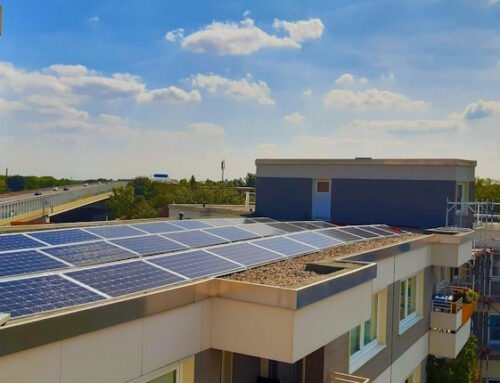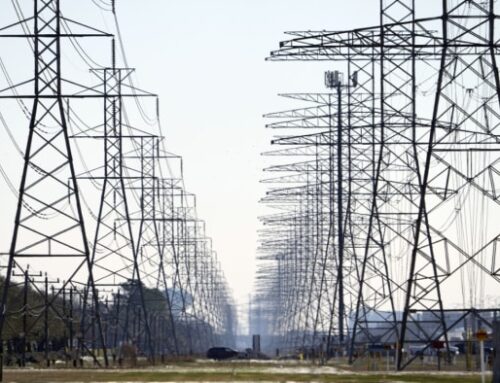What Next For Energy? King Coal, Queen Gas, Or A Renewables Transition
May 12, 2025
“Natural gas is queen,” gushed Exelon energy executive John Rowe at the American Enterprise Institute in Washington. It was 2011, shortly after the Fukishima disaster boosted concerns about nuclear energy, and anxiety over global warming spawned scrutiny of king coal. Natural gas, which has lower emissions than coal when burned, was seen as the answer to a safe, cheap, and clean energy future. Largely due to a new way of extracting gas called fracking, the US grew from being a minor global player in 2014 to become the world’s largest gas producer by 2023.
Freedom Gas
As the US aimed to increase its fossil fuel exports, natural gas was rebranded from “queen” to promoting “freedom.” Referencing the 75th anniversary of the US helping to liberate Europe from Nazi occupation, US Energy Secretary Rick Perry raved: “the United States is again delivering a form of freedom to the European continent … And rather than in the form of young American soldiers, it’s in the form of liquefied natural gas.” US Undersecretary of Energy Mark Menezes effused, “Increasing export capacity from the Freeport LNG project is critical to spreading freedom gas throughout the world by giving America’s allies a diverse and affordable source of clean energy.” (In a spoof on the rebranding of natural gas, Slate News joked: “Spreading freedom gas sounds like what happens when you’re newly single and suddenly have the apartment to yourself.”)
So, if it produces less pollution when burned, promotes freedom in Europe, and even guarantees US energy independence, what’s the problem with natural gas? Turns out a lot according to Cornell professor Robert Howarth, who, in addition to being my colleague, proudly bears his title as the “Climate Scientist Fossil-Fuel Companies Can’t Stand.”
Fracking
Let’s start with the basics. Natural gas is almost completely composed of methane. Although we hear a lot about CO2 and global warming, methane is actually 80 times stronger as a greenhouse gas than CO2 over the first 20 years after it’s emitted. In other words, methane warms the atmosphere a lot faster than CO2 in the near-term. Although methane’s potency goes down over time, scientists agree that we need to draw down emissions immediately–which means the next twenty years are critical.
A hydraulic fracturing operation at a Marcellus Shale well
US Geological Survey
Natural gas can be extracted by conventional wells or by fracking–either way its emissions when burned are lower than those of coal. But natural gas produced via fracking goes through a series of stages from buried in the ground to burned at the power plant. And, at each stage, methane can leak into the atmosphere as “fugitive emissions.” For example, methane escapes when rocks are injected with high-volume water to open up passages for methane extraction and escapes into the atmosphere through equipment leaks, including pressure relief valves that vent gas as a safety precaution. In both conventional and fracked natural gas, additional fugitive emissions occur during transport, storage, and distribution.
Fugitive Methane Emissions
Back in 2011, when Howarth first tried to estimate the total amount of methane emissions from ground to power plant, there wasn’t a lot of data to draw on. Using the best figures available, Howarth and colleagues estimated that during the life cycle of a typical fracked gas well, 3.6 to 7.9% of the total production escapes to the atmosphere as methane. Recognizing the influence of Howarth and fellow Cornell scientist Tony Ingraffea on fracking policy, Time Magazine named them, along with actor and anti-fracking activist Mark Ruffalo, people who mattered. (Others on the 2011 list included Jeff Bezos, Hillary Clinton, Barack Obama, Vladimir Putin, and Kim Jong Il.)
Liquified Natural Gas (LNG)
Fast forward to 2024, and Howarth came out with another controversial paper–this time questioning the wisdom of expanding LNG export facilities in Louisiana and Texas. As with his earlier work on fracking, Howarth painstakingly calculated fugitive emissions throughout the life cycle of LNG from extraction to burning in Europe or China. Emissions come from the energy required to convert natural gas into LNG, as well as from burning fuel and evaporation of LNG during transport. Given the magnitude of these and other LNG emissions, Howarth concluded: “With an even greater greenhouse gas footprint than natural gas, ending the use of LNG should be a global priority. I see no need for LNG as an interim energy source, and note that switching from coal to LNG requires massive infrastructure expenditures, for ships and liquefaction plants and the pipelines that supply them. A far better approach is to use financial resources to build a fossil‐fuel‐free future as rapidly as possible.”
Controversy over Gas Emissions
Not surprisingly, the oil industry and some scientists were not happy with Howarth’s findings and the vitriol began to flow, questioning his credibility and motives.
Critiques of Howarth’s research on natural gas (followed by my responses):
- Howarth used a significantly higher leak rate than U.S. Environmental Protection Agency estimates. (Howarth has since revised his estimates based on a 2024 paper published in the prestigious journal Nature, which integrated nearly one million observations of emissions from satellites and airplane flyovers. Using the Nature paper’s lower leakage rate of 2.8%, Howarth calculates that leakage accounts for 38% of total LNG emissions.1 Further, emissions can vary widely–fracking in Pennsylvania’s Marcellus shale produces significantly lower emissions than fracking in Texas and New Mexico’s Permian basin, a result of limited infrastructure, regulatory leniency, and low gas prices. What’s more, fewer than 2% of well sites contribute 50–79% of emissions, suggesting the need for interventions to limit emissions at the worst sites. As University of Texas petroleum and geosystems engineer Arvind Ravikumar wrote in an email: “The key issue is that assumptions really make-or-break your analysis and overly broad assumptions about supply chains can result in misleading emission intensities.”)
- The leakage rate will decline as leaks are identified and fixed. (Hopefully, Howarth’s work has led to industry efforts to reduce fugitive emissions. But this critique is like saying we don’t need to look at coal’s emissions now because coal plants will put on scrubbers in the future.)
- A time frame limited to 20 years, exaggerating methane’s impact which trails off over longer periods. (The time frame used in emissions studies impacts the results, but a short time frame is critical given the mandate to reduce greenhouse gases as soon as humanly possible. Ignoring methane today will lead to further irreparable harms to the environment and human wellbeing.)
Maroš Šefčovič,Vice-President of the European Commission attends at the Global Methane Pledge (GMP) … More Ministerial meeting during the United Nations Climate Change Conference (COP28) held at Expo City in Dubai, United Arab Emirates on December 4,2023.
European Commission – Ryan Lim
- Howarth received funding from the Parks Foundation, which opposes fracking. (This critique feels a little rich given that the oil and gas industry also funds emissions research.)
- A fifth concern is that Howarth made his LNG analysis public before it went through peer review. Aware of the risk to his reputation, yet urged on by fellow scientist/activists, Howarth made the decision to self-publish his findings because he was convinced that the Biden administration needed to understand the climate consequences of expanding LNG infrastructure. In fact, Biden did use Howarth’s report in deciding to pause LNG export facility expansion. Howarth’s paper has since gone through extensive peer review and been published in a reputable journal, giving scientific credibility to his concerns about LNG as a transition fuel to renewables. Howarth, in the meantime, takes pride in his controversial role as a scientist/activist. As he shared with the Wall Street Journal, “Albert Einstein spoke extensively about the moral obligation of scientists to push their information into policy. It’s part of who I am.”
Future LNG Demand and Tariff Wars
A battle rages not only over the scale of methane emissions from natural gas, but also over the economic outlook for LNG. According to Shell Oil, “Global demand for LNG is forecast to rise by around 60% by 2040.” The Institute for Energy Economics and Financial Analysis (IIEFA) has a totally different take: “Lackluster demand growth combined with a massive wave of new export capacity is poised to send global liquefied natural gas (LNG) markets into oversupply within two years.” IIEFA cites the 20% decline in Europe’s gas consumption over the past two years, and smaller declines in Japan and Korea driven by the transition to nuclear and renewables.
Not surprisingly, the Trump administration sees LNG as a card to play in its tariff wars, hoping LNG exports will eliminate trade deficits with Europe. But, according to the Columbia University Center on Global Energy Policy, “Whatever Trump may think he is gaining in the short-term by pushing more US LNG exports to EU countries, it will hardly be a sustainable solution to bridging the US-EU trade.” Unfortunately for trade deficits, European utilities (not politicians) actually purchase gas. They are wary of entering into long-term contracts with US LNG suppliers as LNG demand declines, and of being exposed to international methane reduction agreements that the Trump administration is likely to ignore. The LNG trade issue is complicated by gas prices, which Trump has promised to lower, thus counteracting his goal of reducing the trade deficit.
Energy Emissions: More than Just Burning
As scientists and oil executives continue to clash over the methane emissions of LNG–and over future demand for LNG–the point remains that we need to go beyond the emissions from simply burning gas or coal to understand their climate footprint. We need to take into account the fugitive emissions of their entire life cycle, from extraction to transport to burning, and even closing down wells and mines. And we need to compare the costs of building new LNG infrastructure to hastening the transition to renewables.
1 The authors of the Nature study also point out the annual financial costs of fugitive emissions: roughly $1 billion in lost commercial gas and $9.3 billion in social costs, such as declining coastal property values due to fire or sea level rise.
Search
RECENT PRESS RELEASES
Related Post




